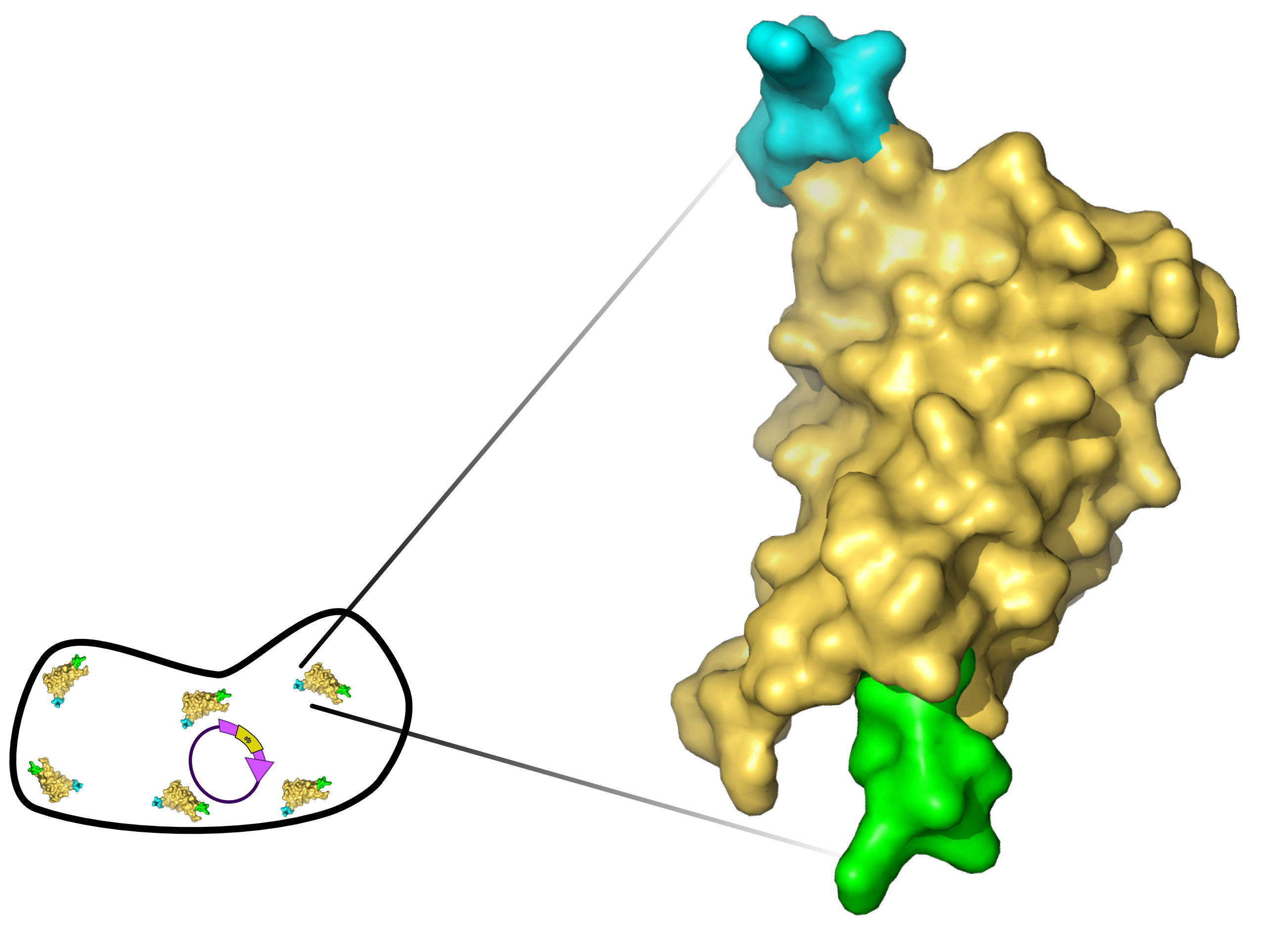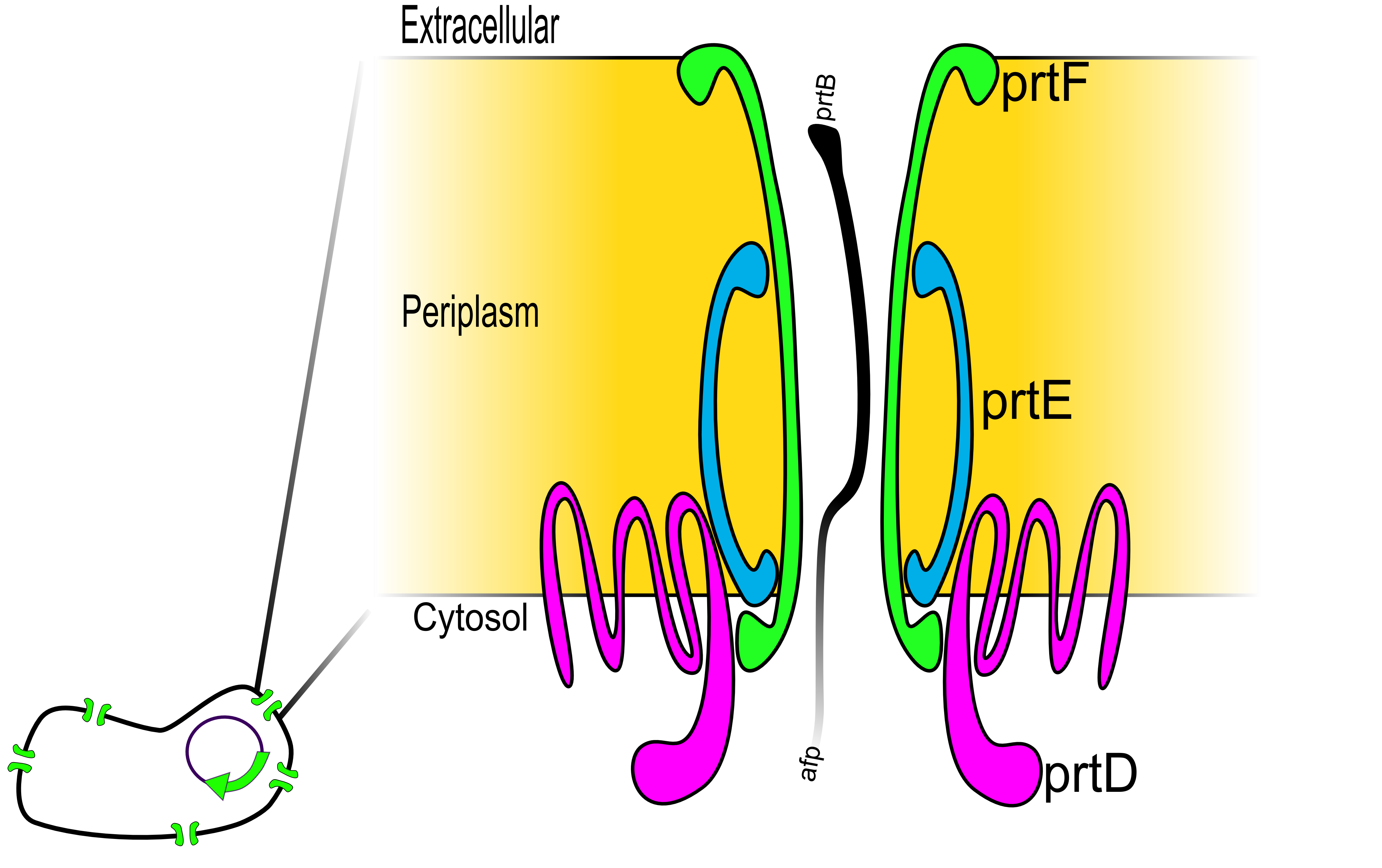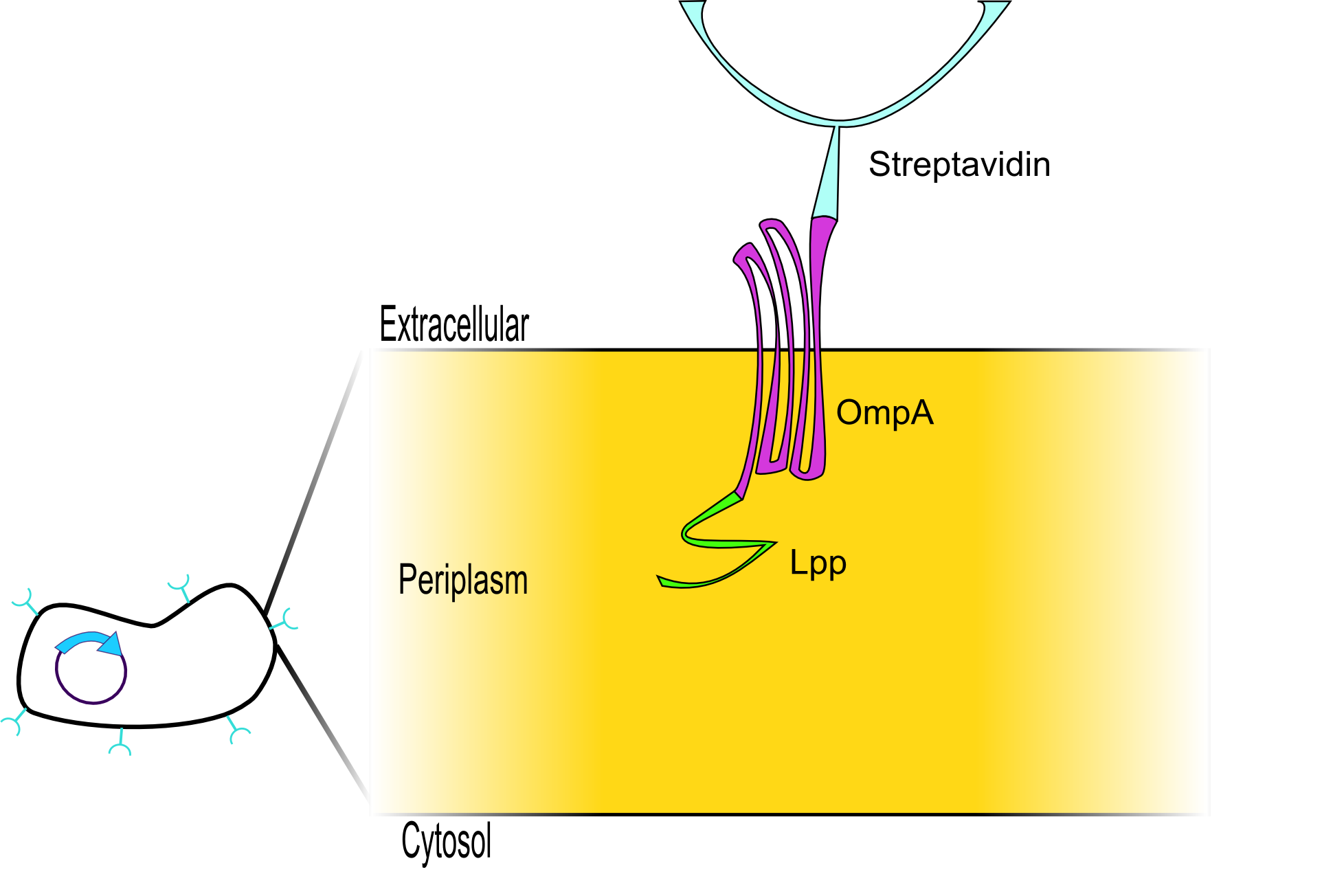Team:Washington/Accomplishments
From 2009.igem.org
(→Secretion System) |
(→Display System) |
||
| Line 83: | Line 83: | ||
=== Display System === | === Display System === | ||
| - | < | + | <table><tr><td> |
| - | [[image:Display_structure.png |300px | + | [[image:Display_structure.png |300px]] |
| + | </td><td> | ||
[http://partsregistry.org/wiki/index.php/Part:BBa_K215200 BBa_K215200] is a Display vector that will allow for the presentation of any protein onto the surface of a cell by fusing the protein to Outer Membrane Protein A (OMPA). The fusion protein contains a GS peptide linker to space the displayed protein away from the outer membrane and also contains a TEV protease site to allow for purification of the displayed protein. | [http://partsregistry.org/wiki/index.php/Part:BBa_K215200 BBa_K215200] is a Display vector that will allow for the presentation of any protein onto the surface of a cell by fusing the protein to Outer Membrane Protein A (OMPA). The fusion protein contains a GS peptide linker to space the displayed protein away from the outer membrane and also contains a TEV protease site to allow for purification of the displayed protein. | ||
| Line 101: | Line 102: | ||
*Current Status: In progress | *Current Status: In progress | ||
| - | + | </td></tr></table> | |
| - | + | ||
| - | < | + | |
| - | + | ||
| - | + | ||
Quick overview of what was done and the status of everyting. Maybe 3 paragraphs (display, secretion, conclusions) | Quick overview of what was done and the status of everyting. Maybe 3 paragraphs (display, secretion, conclusions) | ||
{{Template:Team:Washington/Templates/Footer}} | {{Template:Team:Washington/Templates/Footer}} | ||
Revision as of 21:09, 18 October 2009
University of Washington 2009 iGEM Team Accomplishments
Demonstrated that at least one new BioBrick Part of our own design works as expected
- [http://partsregistry.org/wiki/index.php?title=Part:BBa_K215000 BBa_K215000] Target Expression Vector - expresses a favorite protein fused to streptavidin-binding Nano-Tag, secretion tag that directs export of the protein, and a His tag - all tags are removable by incubation with TEV protease. Find this in our wiki
- [http://partsregistry.org/wiki/index.php?title=Part:BBa_K215091 BBa_K215091] Expresses OpdA, a nerve agent-degrading enzyme. Find this in our wiki
- [http://partsregistry.org/wiki/index.php?title=Part:BBa_K215000 BBa_K215000] Protein Expression Vector - when IPTG-induced, expresses a protein with strong promoter and RBS (a good combination of BioBricks not previously found int he Registry). Find this in our wiki
Characterized existing BioBrick Parts and documented this information on the Registry
- Find these in our wiki
- [http://partsregistry.org/wiki/index.php/Part:BBa_J36848 BBa_J36848] 2006 Harvard iGEM Streptavidin Cell Surface Display Construct - monomeric streptavidin, one OmpA transmembrane helix
- [http://partsregistry.org/wiki/index.php/Part:BBa_J36849 BBa_J36849] 2006 Harvard iGEM Streptavidin Cell Surface Display Construct - dimeric streptavidin, one OmpA transmembrane helix
- [http://partsregistry.org/wiki/index.php/Part:BBa_J36850 BBa_J36850] 2006 Harvard iGEM Streptavidin Cell Surface Display Construct - monomeric streptavidin, five OmpA transmembrane helices
- [http://partsregistry.org/wiki/index.php/Part:BBa_J36851 BBa_J36851] 2006 Harvard iGEM Streptavidin Cell Surface Display Construct - dimeric streptavidin, five OmpA transmembrane helices
Synthesized and BioBricked type I secretion system from Erwinia Chrysanthemi
- Find these in our wiki
- [http://partsregistry.org/wiki/index.php/Part:BBa_K215107 BBa_K215107], Type I secretion system from Erwinia Chrysanthemi, constitutive expression, low copy, STRONG PROMOTER
- [http://partsregistry.org/wiki/index.php/Part:BBa_K215107 BBa_K215107], Type I secretion system from Erwinia Chrysanthemi, constitutive expression, low copy, MEDIUM PROMOTER
- [http://partsregistry.org/wiki/index.php/Part:BBa_K215107 BBa_K215107], Type I secretion system from Erwinia Chrysanthemi: constitutive expression, low copy, WEAK PROMOTER
Developed assay to quantify protein secretion
- This assay assess for the presence of secreted His-tagged protein in the growth media by running media over a nickel column (His-tagged proteins will be retained), wash column, and elute protein. Eluted protein is quantified by comparing to a calculated standard curve. Find this in our wiki
Designed new modular surface display system
- This BioBrick is designed to express any protein as a cell surface display protein, using the well-characterized Lpp-OmpA cell surface display system. Generated BioBrick, functionality not confirmed. Find this in our wiki
Computationally design novel Biotin-binding protein using Rosetta
Gain real-world synthetic biology experience
- We learned about the power of synthetic biology to address real-world problems, gained experience in designing and constructing our own molecular biology projects, and discovered that proficiency in troubleshooting is a must with synthetic biology. Find us in our wiki
BioBricks
Target Vector
|
[http://partsregistry.org/wiki/index.php/Part:BBa_K215002 BBa_K215002] Is a BioBrick part that was made to work in conjunction with the Secretion System ([http://partsregistry.org/wiki/index.php/Part:BBa_K215107 BBa_K215107]). When used it creates a fusion protein, that contains the prtB secretion signal recognized by the secretion system. It also fuses to the protein a nano-tag that is able to bind Streptavidin, TEV protease site (for isolating your protein from the fusion) and Histidine Epitote Tags for easy protein purification.
|
Secretion System
|
[http://partsregistry.org/wiki/index.php/Part:BBa_K215107 BBa_K215107] Is a BioBrick version of the Type 1 secretion system of Erwinia Chrysanthemi. It secretes proteins that contain the prtB C-terminus Epitote tag. To create a fusion protein with the prtB tag see [http://partsregistry.org/wiki/index.php/Part:BBa_K215002 BBa_K215002].
|
Display System
|
[http://partsregistry.org/wiki/index.php/Part:BBa_K215200 BBa_K215200] is a Display vector that will allow for the presentation of any protein onto the surface of a cell by fusing the protein to Outer Membrane Protein A (OMPA). The fusion protein contains a GS peptide linker to space the displayed protein away from the outer membrane and also contains a TEV protease site to allow for purification of the displayed protein.
|
Quick overview of what was done and the status of everyting. Maybe 3 paragraphs (display, secretion, conclusions)
 "
"




